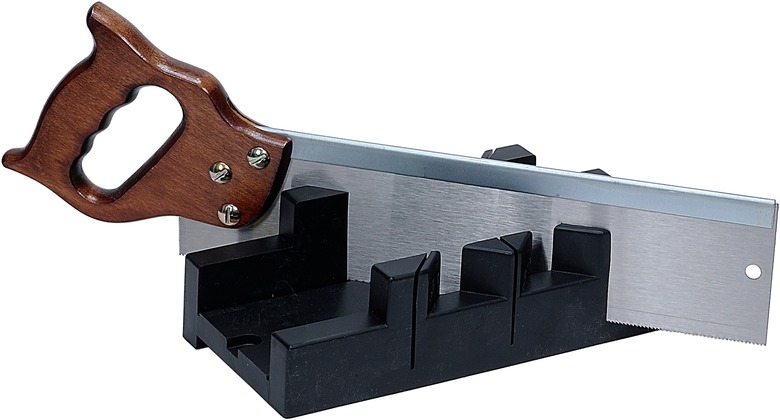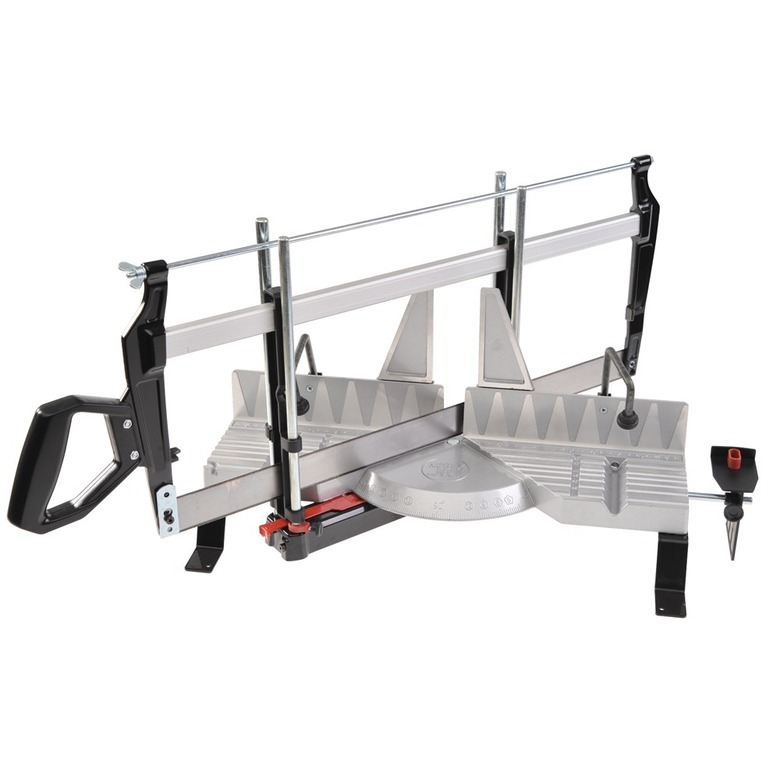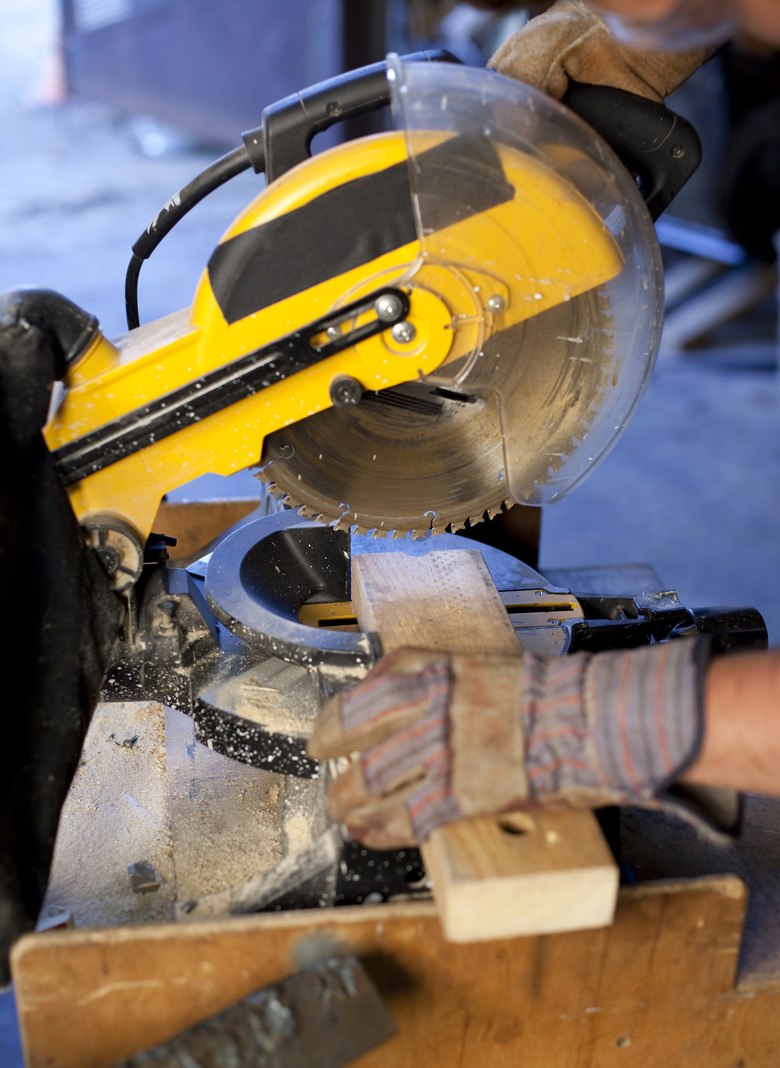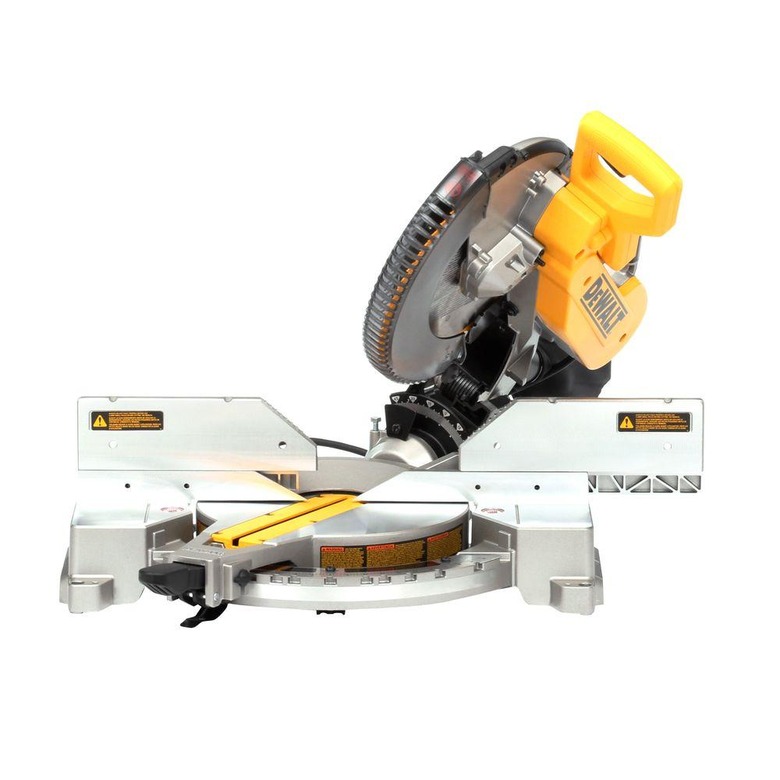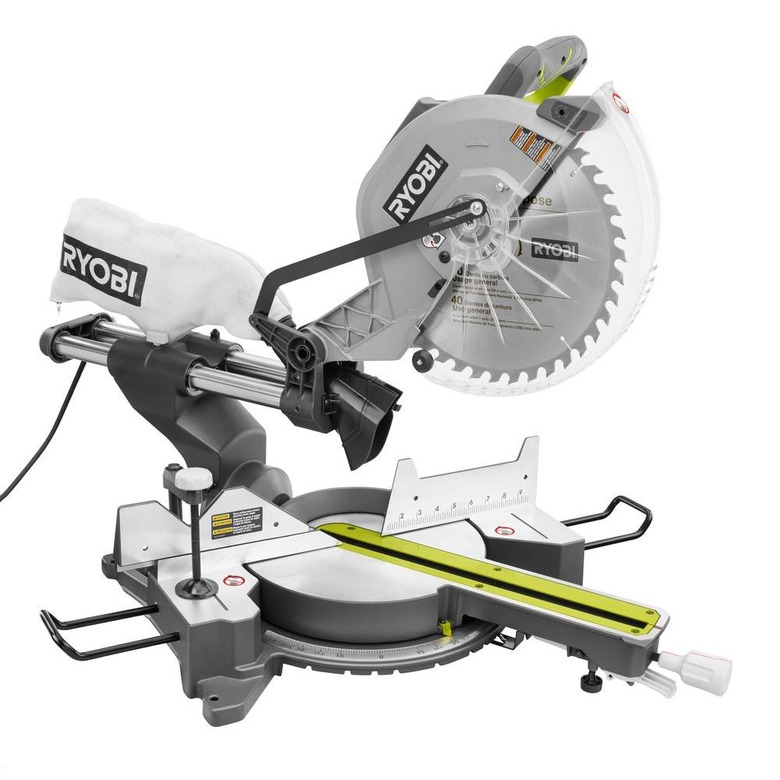A Homeowner's Guide To Miter Saws
A miter saw is the tool of choice for making angled cuts on many types of trim and lumber. Unlike a circular saw or jigsaw, which are freehand tools, a miter saw fixes the blade at a preset angle so it's easy to make highly accurate, repeatable cuts quickly and safely. Miter saws range from simple "boxes" with slots for guiding a handsaw blade to sophisticated power tools that can cut angles in two different planes at the same time. Choosing the right saw depends on the tasks you have in mind, but if you're looking for a power saw for house projects, a mid-size compound saw will most likely serve you best.
Cuts That Miter Saws Make
Cuts That Miter Saws Make
To appreciate the value of a miter saw, you have to understand the basics of miter cuts. In general, miter saws cut angles from 0 degrees to 45 degrees. (Confusingly, 0 degrees on a saw makes a 90-degree square cut on the wood, but this is easy to sort out when you have a saw in front of you.)
There are three basic types of angled cuts. A miter cut makes an angle from one side edge of the wood to the other; think of a picture frame or the decorative wall trim around a door or window. A bevel cut is an angle along the edge or end of a workpiece, with the angle running from back to front or front to back; think of baseboard meeting at a wall corner. A compound cut, or compound miter, has both a miter and a bevel in the same cut. Because crown molding is installed at an angle to the wall, if you want two pieces of crown to meet at a corner, you have to make a compound cut for this kind of trim molding.
Manual Miter Boxes and Miter Saws
Manual Miter Boxes and Miter Saws
The simplest type of miter saw setup is a miter box with a handsaw. A miter box is a U-shaped device with a base and two sides. The sides have slots for holding a saw blade at a 45- or 90-degree angle to the work, and some also have slots at 22 1/2 degrees (one-half of 45), but that's it. Miter boxes are inexpensive and hold limited sizes of materials, but they're suitable for basic miter cuts on light trimwork. The standard handsaw used with a miter box is a backsaw—a short, rectangular saw with a stiff spine that prevents the blade from flexing.
Another type of manual miter saw is a traditional woodworker's miter saw, which is a simple, manual version of today's power miter saws. It has a raised base, or table, a vertical fence and a special saw that slides freely along two guides. The blade assembly rotates on the table and can be locked in angle positions from 0 to 45 degrees. This miter saw makes cleaner cuts than a miter box and offers a full range of angles, but it's a lot more work and has much less capability than a power saw.
Standard Power Miter Saw
Standard Power Miter Saw
A standard power miter saw has a heavy metal table and fence, and a blade and motor assembly that pivots at the back to allow the blade to move straight up and down. The assembly can be rotated right or left to cut a full range of angles. These saws are simple, easy to use and relatively inexpensive, but they offer more limited cutting capacity and functions than other types of power miter saws.
Standard miter saws are commonly, but incorrectly, called chop saws, probably owing to the chopping motion of the saw blade. In the tool industry, a chop saw is a simpler tool with an abrasive (not a wood-cutting) blade used for cutting metal rebar and steel framing. It has the same straight-up-and-down chopping motion but does not rotate for angle cuts.
Compound Miter Saws
Compound Miter Saws
Basic compound miter saws have blade and motor assemblies that pivot at the back, like standard miter saws, but in addition to rotating for miter cuts, they can also tilt to the side for bevel cuts. They can make miter cuts, bevel cuts or any combination of miter and bevel—that is, compound cuts.
Thanks to the compound capability, these saws allow you to make compound cuts on crown molding while holding the trim flat on the saw table. By contrast, standard miter saws can make compound cuts on crown if you hold the trim at an angle to the table, but this can be a tricky cut, and it works only with smaller sizes of trim.
The same advantage of compound saws also applies to baseboard, lumber and other materials, as many bevel cuts are easier to make with the work placed flat on the saw table. To make a bevel cut on a standard miter saw, you have to hold the work on its edge rather than flat on its face or back.
Sliding Compound Miter Saws
Sliding Compound Miter Saws
A sliding compound saw does everything a standard compound saw does, but instead of being fixed at the back, the blade and motor assembly slides in and out on horizontal rails. The primary advantage to this lies in the tool's cutting capacity. While a standard compound saw can cut only as far as its blade can reach, a sliding saw has the range of motion provided by the rails, so it is able to cut much wider material, including large framing lumber used for joist and rafters.
The ultimate in versatility is a sliding compound saw with dual-bevel capability, which means the blade can tilt to the right or the left, so you can cut opposing bevels (or compound cuts) without having to flip the workpiece end for end. Some standard compound saws also are dual-bevel.
The downsides of sliding saws are higher cost and complexity, and that they need extra room for the sliding rails, which typically extend behind the backside of the saw, so it can't be placed too close to a wall. Some saws minimize the extra space required by replacing the sliding bars with articulating arms or with a combination of pivoting and sliding actions.
Common Miter Saw Sizes
Common Miter Saw Sizes
Power miter saws come in three standard sizes: 7 1/4-inch, 10-inch and 12-inch, which indicates the diameter of the saw blade. The main factors affected by the size are the depth of cut, the saw blade type (and cost), and the overall tool size (and portability).
A 7 1/4-inch saw is small, lightweight and highly portable. It uses the same size of blade as a standard circular saw, and it cuts only as deep—about 2 inches, which gets you through a 2 x 4 but nothing much thicker. Blades on 7 1/4-inch saws are interchangeable with circular saw blades.
A 10-inch saw is the most common size and offers the best balance of cutting capacity and portability. It can cut through a 4 x 4 and uses the same blades as a table saw. This is the most practical size for homeowners: It's a hefty, full-size miter saw with good cutting capacity but is compact and light enough to be moved around as needed.
A 12-inch saw can cut to a depth of almost 4 1/2 inches. This will get through a 4 x 4, of course, but not through a 6 x 6, which is 5 1/2 inches thick. Where the extra size pays off is the greater reach of the large blade for cutting wider material. However, 12-inch saws are bigger, heavier and more expensive than 10-inch models, and while their size may come in handy every once in a while, they're generally overkill for most home shops.
